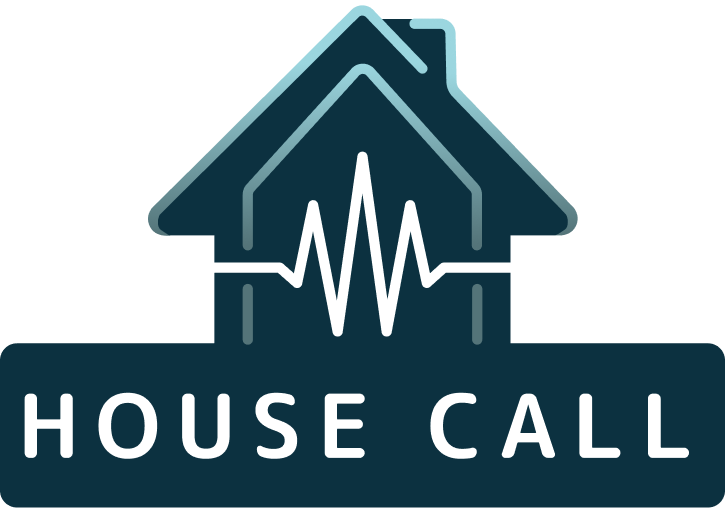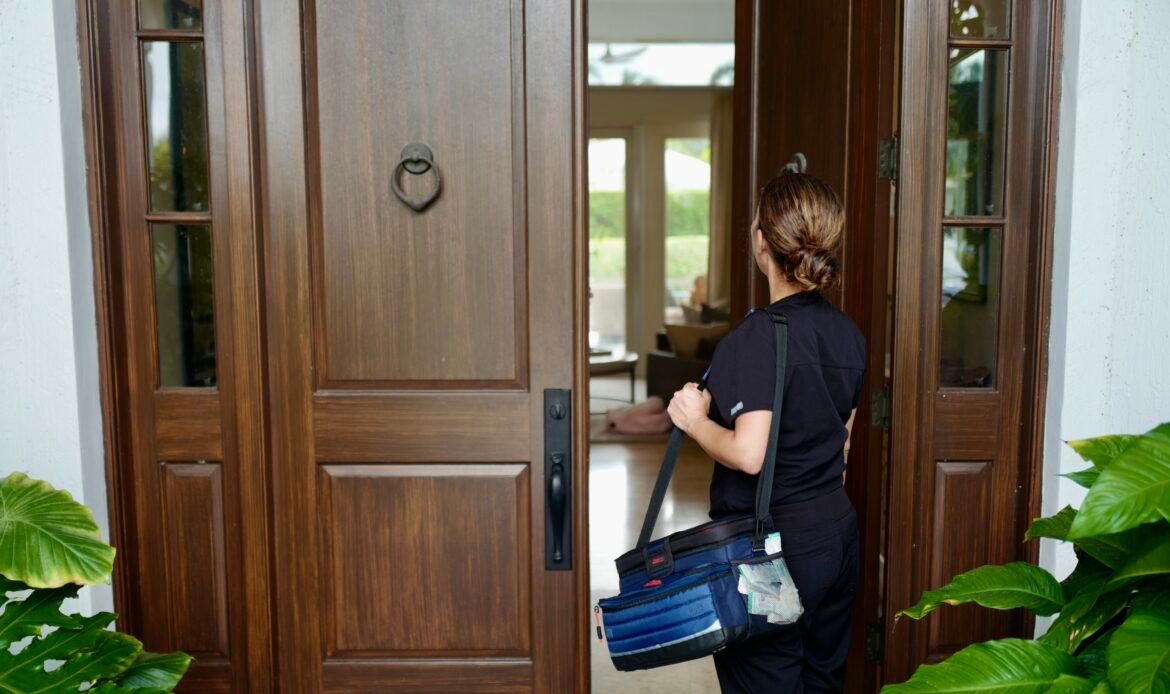What Is a House Call? The Comeback of In-Home Healthcare
For generations, clinicians brought care to the patient with house calls. Today, technology, consumer expectations, and value-based payment models are bringing house calls back—now supported by apps, remote monitoring, and coordinated teams.
How House Calls Work
A house call is when a licensed provider—physician, NP, RN, or specialist—travels to the patient’s home to deliver care. Modern house calls range from same-day urgent care and routine checkups to post-operative nursing, IV therapy, and select aesthetics.
Common reasons to choose a house call:
- Same-day illness or minor injury care
- Routine/annual checkups & preventative care
- Post-operative visits and wound checks
- Concierge nursing
- Lab work and blood draws
- IV hydration, vitamin and NAD+ therapy
- Aesthetics and cosmetics (e.g., Botox, fillers)
How Fast Are House Calls Growing?
Across the United States, the home healthcare market and trends of house calls are growing. This is evident in coverage for home health and house call-type models. For example, the hospital–at–home model has expanded to be approved in 39 states with over 400 hospitals across 142 systems as of June of 2025 (AHA, 2025). In June 2024, one year prior, only 12 states had coverage for the hospital-at-home program (AHA, 2025). Furthermore, there is a rise of Home-Based Primary Care (HBPC) in recent years to due to aging population, increase of chronic conditions, and supportive political landscape (Haferkamp, et al., 2025).
Home Health Care and House Call Growth in Florida
In South Florida, demand for house calls and home healthcare is on the rise—driven by the region’s sizable aging population and evolving wellness trends. 21% of Florida’s population are 65 and older, well above the national average of 17% (SVN, 2024).
As elder populations grow, services that deliver healthcare directly to homes are becoming increasingly essential. At the same time, the South Florida medspa market—which includes mobile and on-site wellness services—was valued at $199.5 million in 2024 and is projected to reach $1.09 billion by 2033, representing a staggering 20.7% CAGR (Grand View Research, 2024). This surge reflects a broader shift toward preventative wellness and beauty treatments accessible outside traditional settings. Together, these factors highlight why house calls and mobile healthcare services are gaining momentum across the region.
Why House Calls Are Growing Again
Modern life is busier than ever and waiting weeks for an appointment—or hours at urgent care—doesn’t work for many patients. Technology has brought back the convenience of in-home visits, but with a modern twist.
Key benefits of house calls include:
- Convenience: Care at your doorstep, no travel required
- Privacy: Discreet, comfortable environment for treatments
- Faster Access: Same-day or next-day appointments in many areas
- Personalized Attention: More time with your provider, less rushing
- Technology: telehealth, remote monitoring, logistics
- Value-based care: programs and reimbursement, lower-cost home settings
For patients, this means better outcomes and less stress. For providers, it offers flexibility and a more direct connection with patients. This is why more nurses, NPs and doctors are providing house calls.
Do House Calls Improve Outcomes?
Short answer: often, especially in the right populations and programs.
- Hospital-at-Home (acute episodes): CMS’ study found lower mortality at home vs. in-hospital peers; readmission results were mixed by diagnosis, and hospital-acquired conditions were less common at home. Patients/caregivers reported positive experiences (CMS, 2024).
- HBPC (home-limited patients): Multiple reviews show reductions in hospitalizations or days admitted in many settings, though not universally (Kimmey, et al., 2024).
Who Provides House Calls Today?
- Physicians & Nurse Practitioners: urgent issues, acute exacerbations, routine care
- Registered Nurses: post-op care, medication management, IV therapy, education
- Specialists: sports medicine, geriatrics, select aesthetics (Botox, fillers, rejuvenation)
How House Call The App Makes It Simple
- Download the app and create your profile
- Choose a service
- Pick a provider & time that fits your schedule
- Get care at home with secure payments and clear visit details
House Call The App connects you with vetted providers for on-demand in-home care across South Florida.
The Future of Healthcare Is at Home
With demographic tailwinds, payer support, and expanding hospital-at-home capabilities, expect more care to shift homeward, from primary care and nursing to post-acute recovery and targeted procedures. House calls are no longer nostalgic; they’re a practical, evidence-supported way to deliver patient-centered care.
References
American Hospital Association. (2024) Fact Sheet: Extending the Hospital at Home Program. https://www.aha.org/fact-sheets/2024-08-06-fact-sheet-extending-hospital-home-program.
Centers for Medicare & Medicaid Services (2024) Fact Sheet: Report on the Study of the Acute Hospital Care at Home Initiative. https://www.cms.gov/newsroom/fact-sheets/fact-sheet-report-study-acute-hospital-care-home-initiative?utm_source=chatgpt.com.
Grand View Research (2025) South Florida Medical Spa Market Size, Share & Trends Analysis Report, 2025–2033. South Florida Medical Spa Market Size. https://www.grandviewresearch.com/industry-analysis/south-florida-medical-spa-market-report.
Haferkamp, T., Ing, S., Weyer, G. et al. (2025) Home-Based Primary Care (HBPC): Aging in Place in 2025. Curr Geri Rep 14, 3.
Kimmey, L., Wysocki, A., Forrow, L.V. et al. (2024) Effects of Home-Based Primary Care on Hospital Use for High-Need Medicare Patients: an Observational Study. J GEN INTERN MED39, 19–26.
SVN Commercial Advisory Group. (2024) “Aging Population Keeps Florida’s Medical Office Market Healthy.” SVN Commercial Advisory Group (Suncoast SVN). https://suncoastsvn.com/floridas-medical-office-market.

 Login
Login